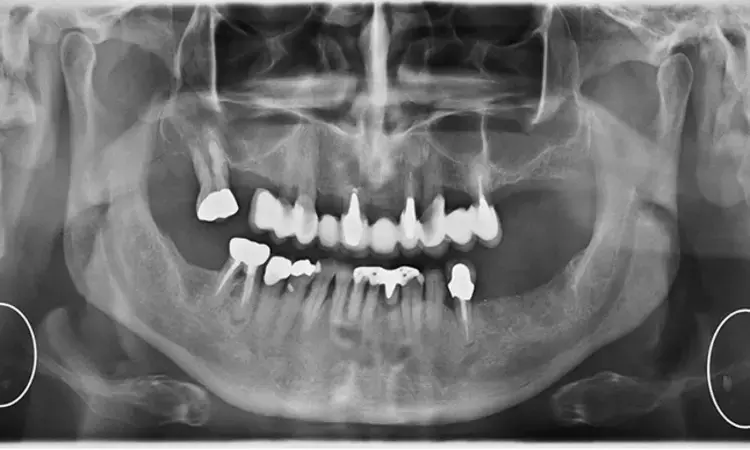- Home
- Medical news & Guidelines
- Anesthesiology
- Cardiology and CTVS
- Critical Care
- Dentistry
- Dermatology
- Diabetes and Endocrinology
- ENT
- Gastroenterology
- Medicine
- Nephrology
- Neurology
- Obstretics-Gynaecology
- Oncology
- Ophthalmology
- Orthopaedics
- Pediatrics-Neonatology
- Psychiatry
- Pulmonology
- Radiology
- Surgery
- Urology
- Laboratory Medicine
- Diet
- Nursing
- Paramedical
- Physiotherapy
- Health news
- Fact Check
- Bone Health Fact Check
- Brain Health Fact Check
- Cancer Related Fact Check
- Child Care Fact Check
- Dental and oral health fact check
- Diabetes and metabolic health fact check
- Diet and Nutrition Fact Check
- Eye and ENT Care Fact Check
- Fitness fact check
- Gut health fact check
- Heart health fact check
- Kidney health fact check
- Medical education fact check
- Men's health fact check
- Respiratory fact check
- Skin and hair care fact check
- Vaccine and Immunization fact check
- Women's health fact check
- AYUSH
- State News
- Andaman and Nicobar Islands
- Andhra Pradesh
- Arunachal Pradesh
- Assam
- Bihar
- Chandigarh
- Chattisgarh
- Dadra and Nagar Haveli
- Daman and Diu
- Delhi
- Goa
- Gujarat
- Haryana
- Himachal Pradesh
- Jammu & Kashmir
- Jharkhand
- Karnataka
- Kerala
- Ladakh
- Lakshadweep
- Madhya Pradesh
- Maharashtra
- Manipur
- Meghalaya
- Mizoram
- Nagaland
- Odisha
- Puducherry
- Punjab
- Rajasthan
- Sikkim
- Tamil Nadu
- Telangana
- Tripura
- Uttar Pradesh
- Uttrakhand
- West Bengal
- Medical Education
- Industry
Cone beam CT may incidentally detect calcified head-and-neck atheromas during dental evaluation

Calcified carotid atheromas commonly observed on cone beam computed tomography suggest a recent study published in the Journal of Prosthodontics
Atheromas can be detected incidentally in routine dental cone beam computed tomography (CBCT) images. This study aims to assess prevalence and risk factors associated with these vascular lesions.
The maxillofacial CBCTs of 458 subjects were evaluated and divided into 4 groups based on the presence of calcified atheroma: subjects with no calcified atheroma, subjects with intracranial calcified atheroma (ICA), subjects with extracranial calcified atheroma (ECA), and subjects exhibiting combined lesions. Age, sex, medical conditions, family history, and size were documented. Analysis of variance followed by a multiple comparison test was used for data satisfying parametric test assumptions. Chi-squared tests were used to assess categorical data. The Spearman Rho test was used to assess the correlation between the incidence of calcified atheroma and subjects’ medical condition.
Results
• Of the 458 CBCTs evaluated, 29.90% presented with calcified atheroma.
• Calcified atheroma prevalence was significantly higher in older patients versus younger patients (p = 0.004) and in males compared to females (p = 0.004).
• Males were more likely to have the combination of ICA and ECA, whereas females were more likely to have ICA alone (p ≤ 0.040).
• Patients with calcified atheroma were significantly more likely to have a history of hyperlipidemia (p = 0.001), hypertension (p = 0.001), and myocardial infarction/coronary artery diseases (p = 0.001).
• Overall, patients exhibiting both intracranial and extracranial lesions were more likely to have cardiovascular risk factors (p = 0.001).
Incidentally detected calcified atheromas in CBCTs are common. Subjects with combined atheroma lesions are at higher risk for cardiovascular disease. The diagnosis of incidental calcified atheromas in CBCT's warrants early referral to medical specialists, especially if there is no medical history of existing cardiovascular disease.
Reference:
Amarin, R, Alshalawi, H, Zaghlol, R, Price, JB, Driscoll, CF, Romberg, E, et al. Incidental findings in cone beam computed tomography volumes: Calcified head-and-neck atheromas detected during dental evaluation. J Prosthodont. 2022; 1– 8. https://doi.org/10.1111/jopr.13629
Dr. Shravani Dali has completed her BDS from Pravara institute of medical sciences, loni. Following which she extensively worked in the healthcare sector for 2+ years. She has been actively involved in writing blogs in field of health and wellness. Currently she is pursuing her Masters of public health-health administration from Tata institute of social sciences. She can be contacted at editorial@medicaldialogues.in.
Dr Kamal Kant Kohli-MBBS, DTCD- a chest specialist with more than 30 years of practice and a flair for writing clinical articles, Dr Kamal Kant Kohli joined Medical Dialogues as a Chief Editor of Medical News. Besides writing articles, as an editor, he proofreads and verifies all the medical content published on Medical Dialogues including those coming from journals, studies,medical conferences,guidelines etc. Email: drkohli@medicaldialogues.in. Contact no. 011-43720751


